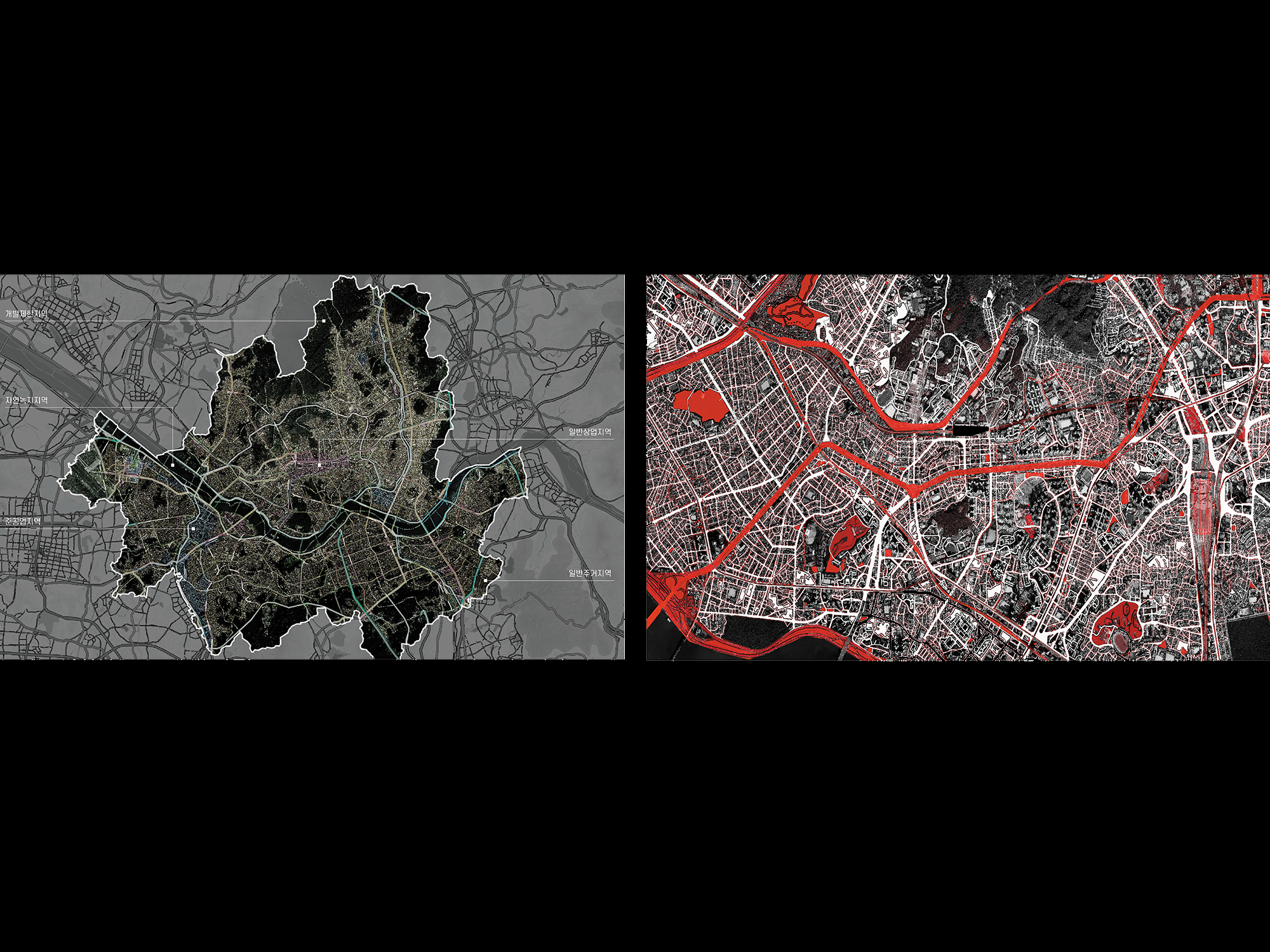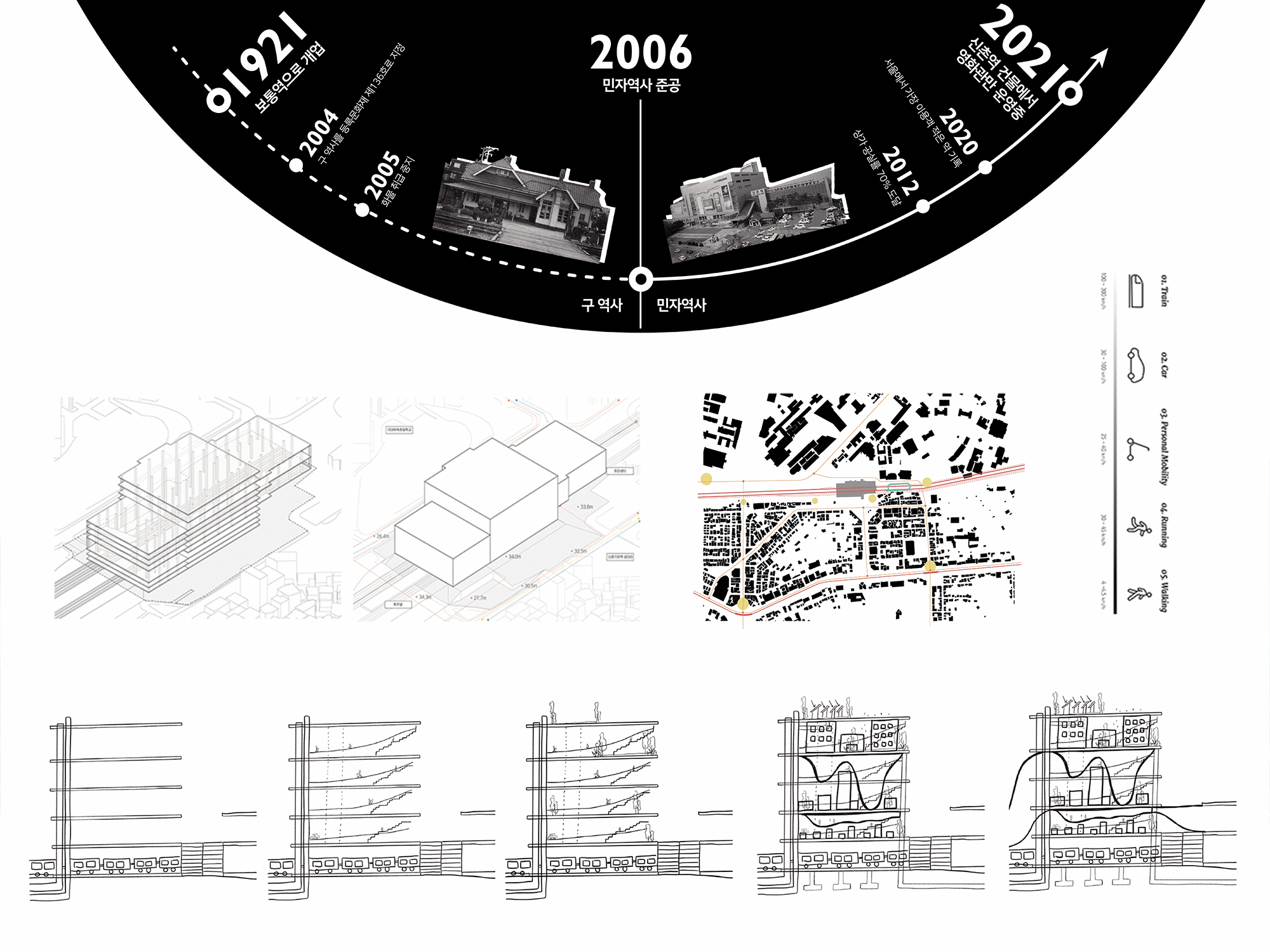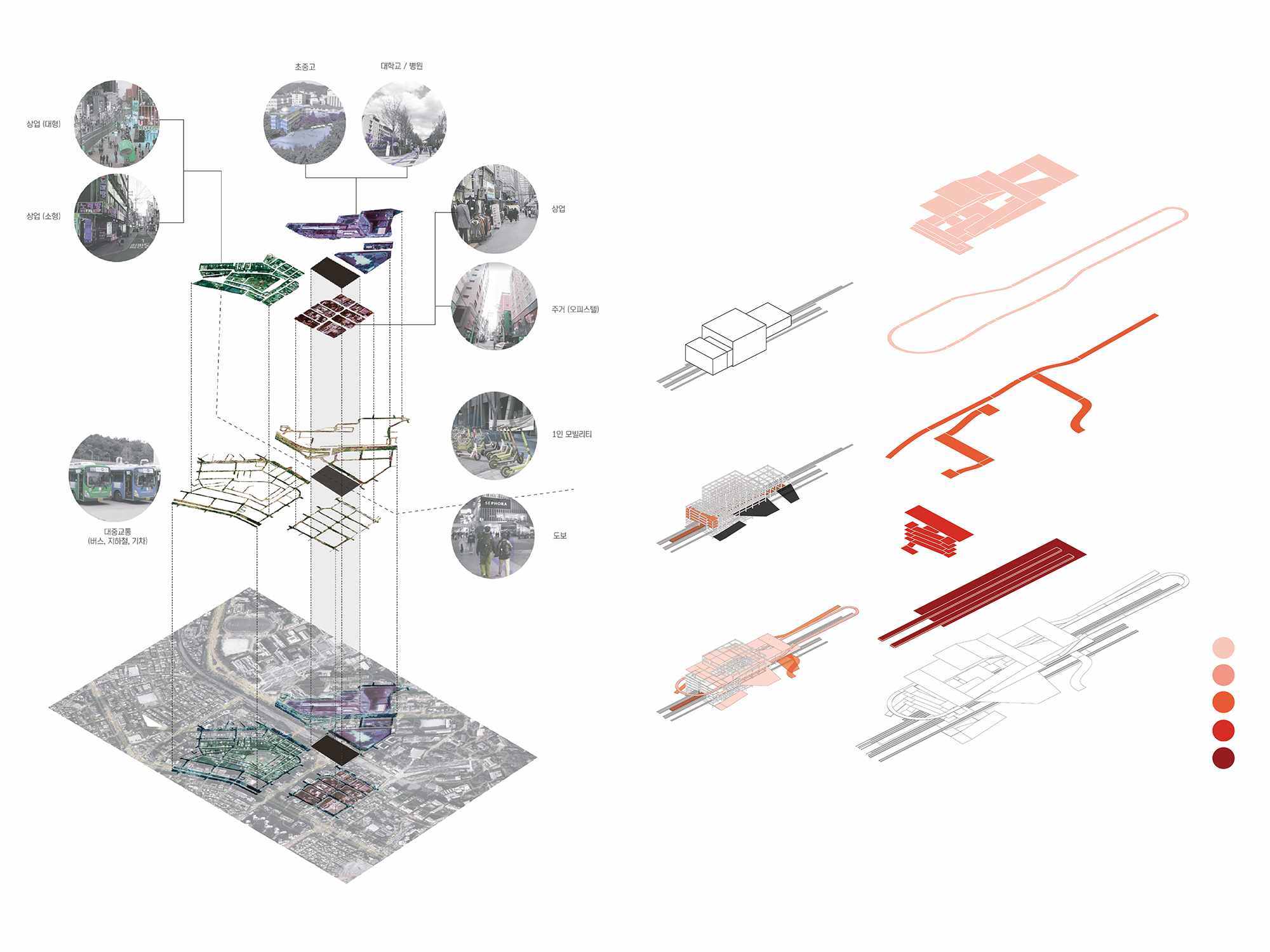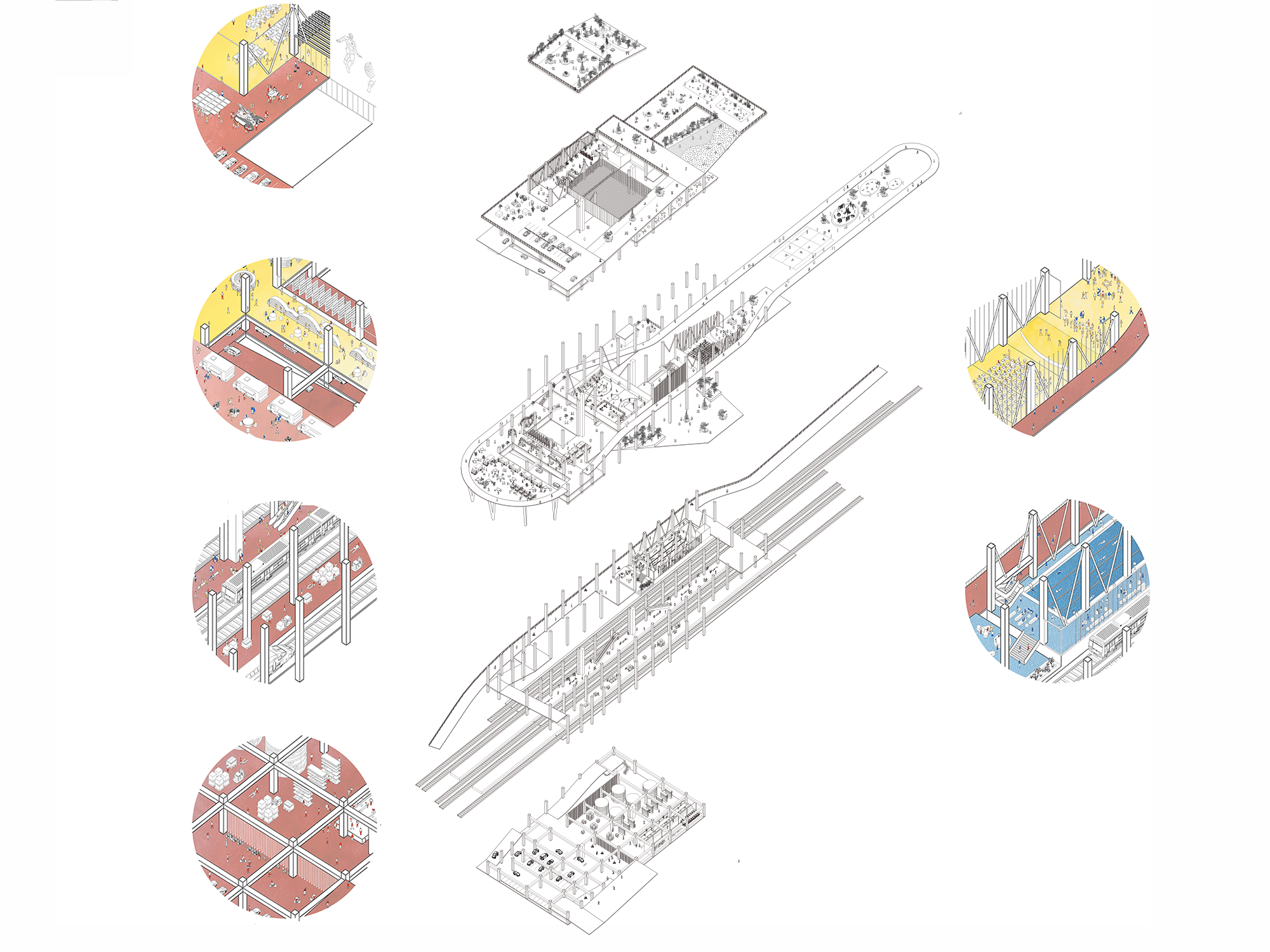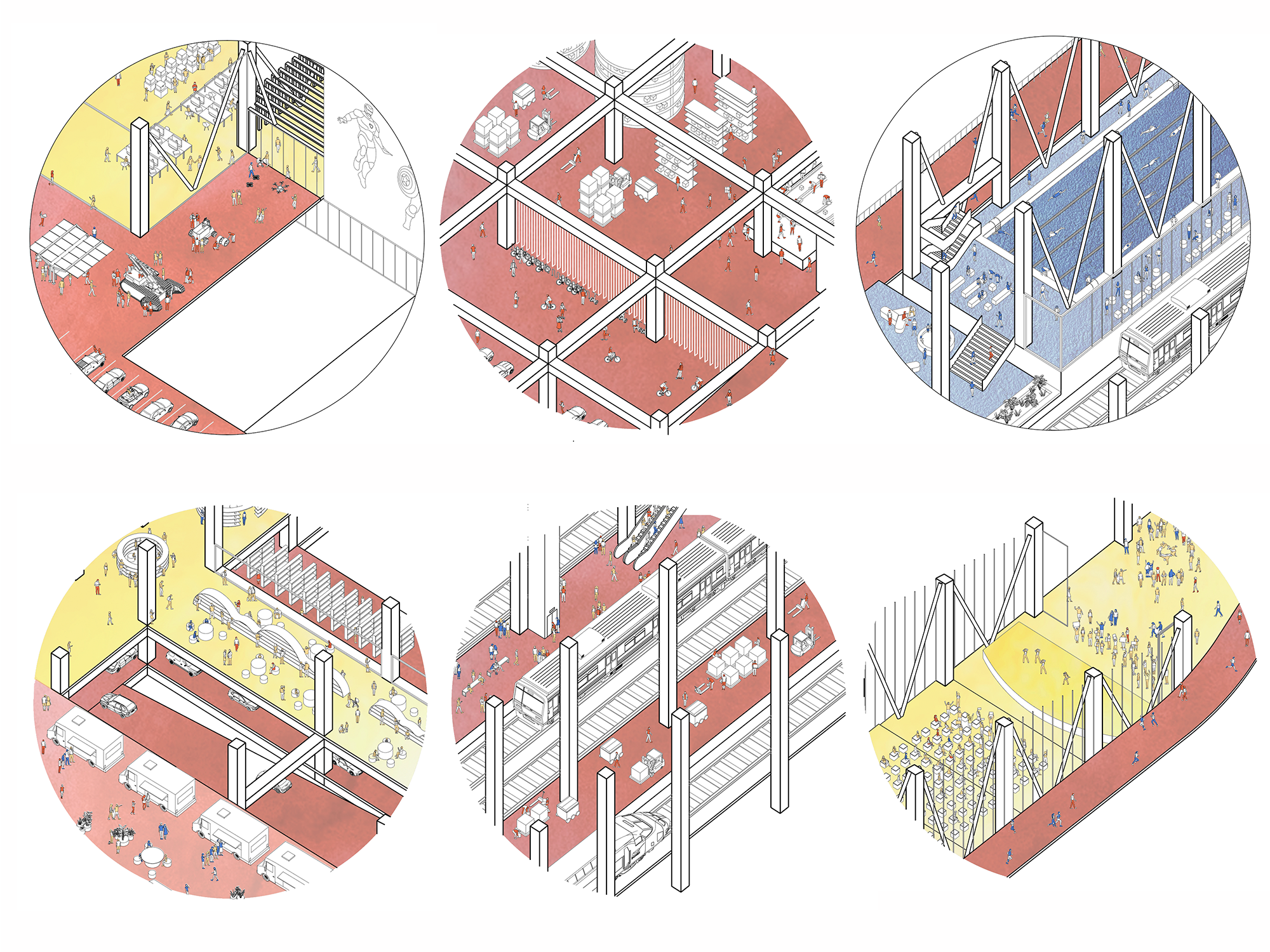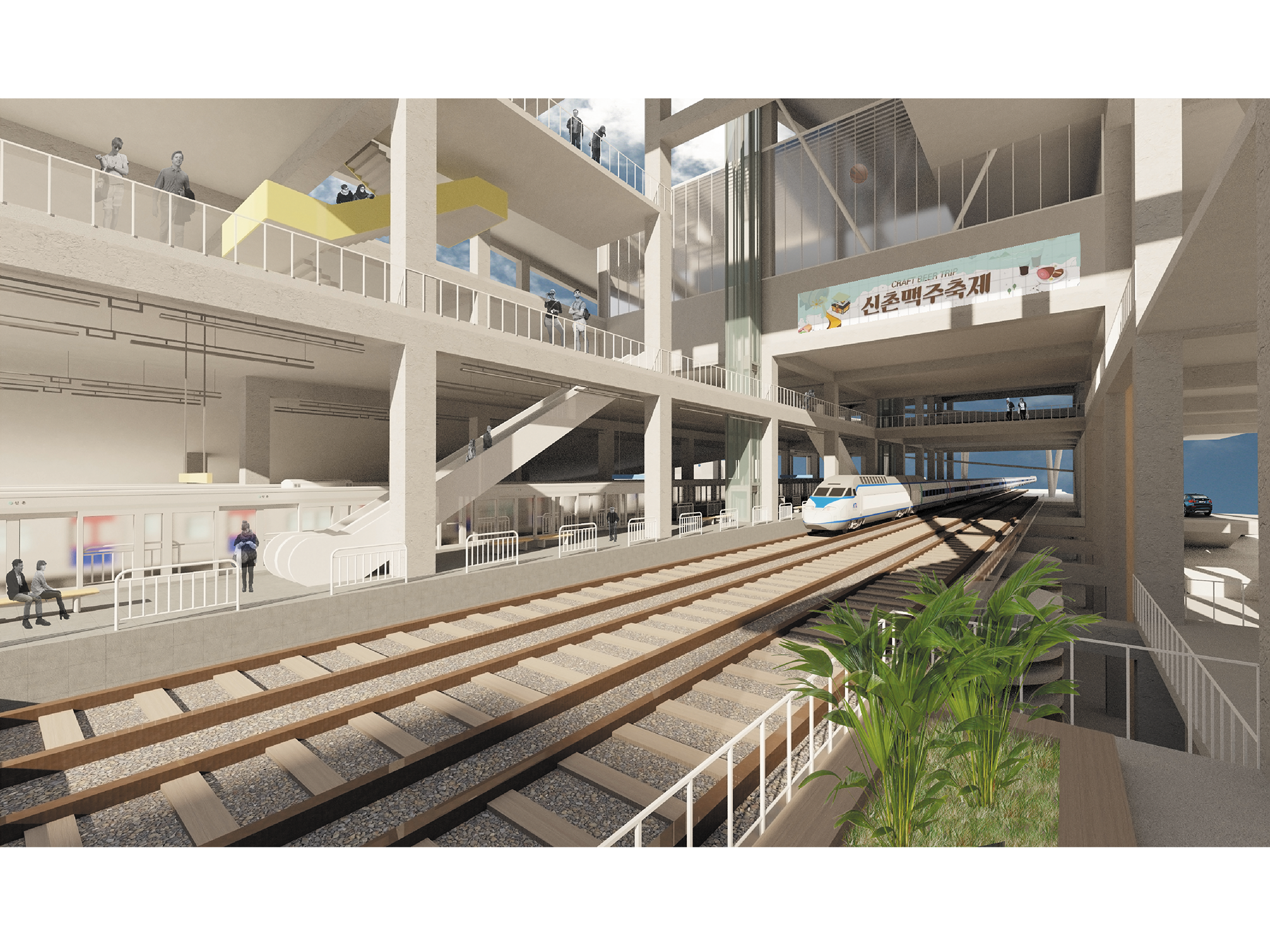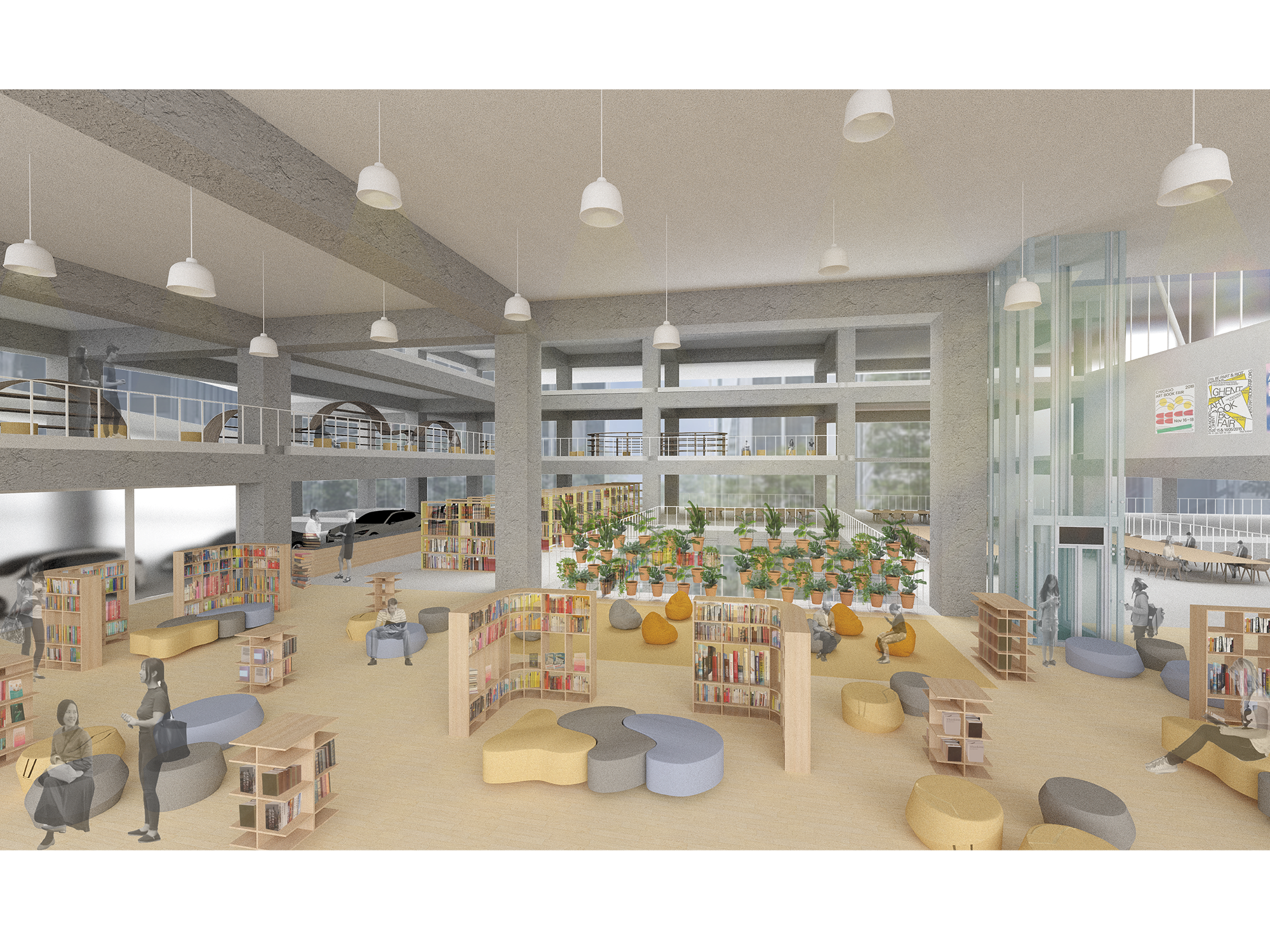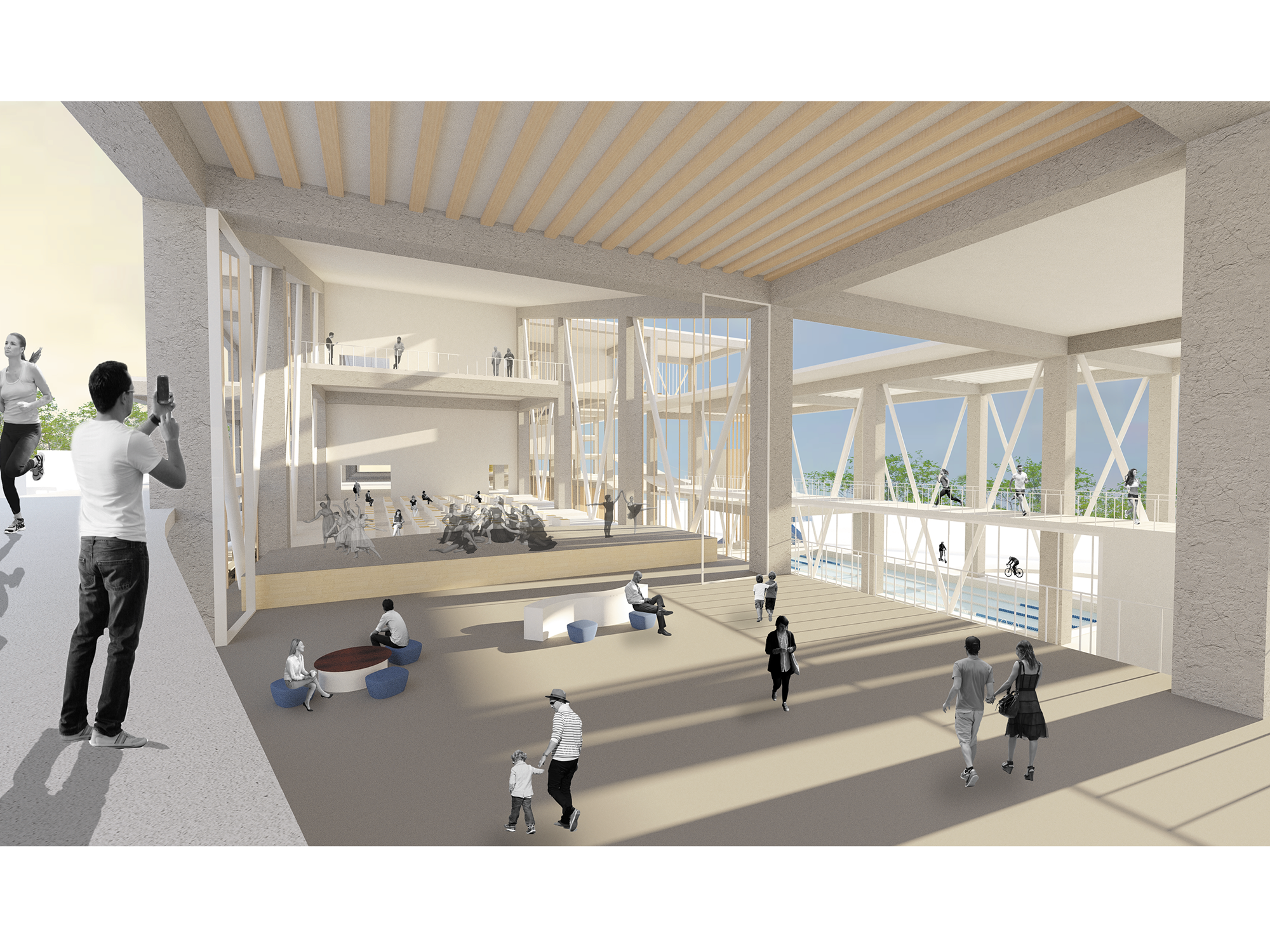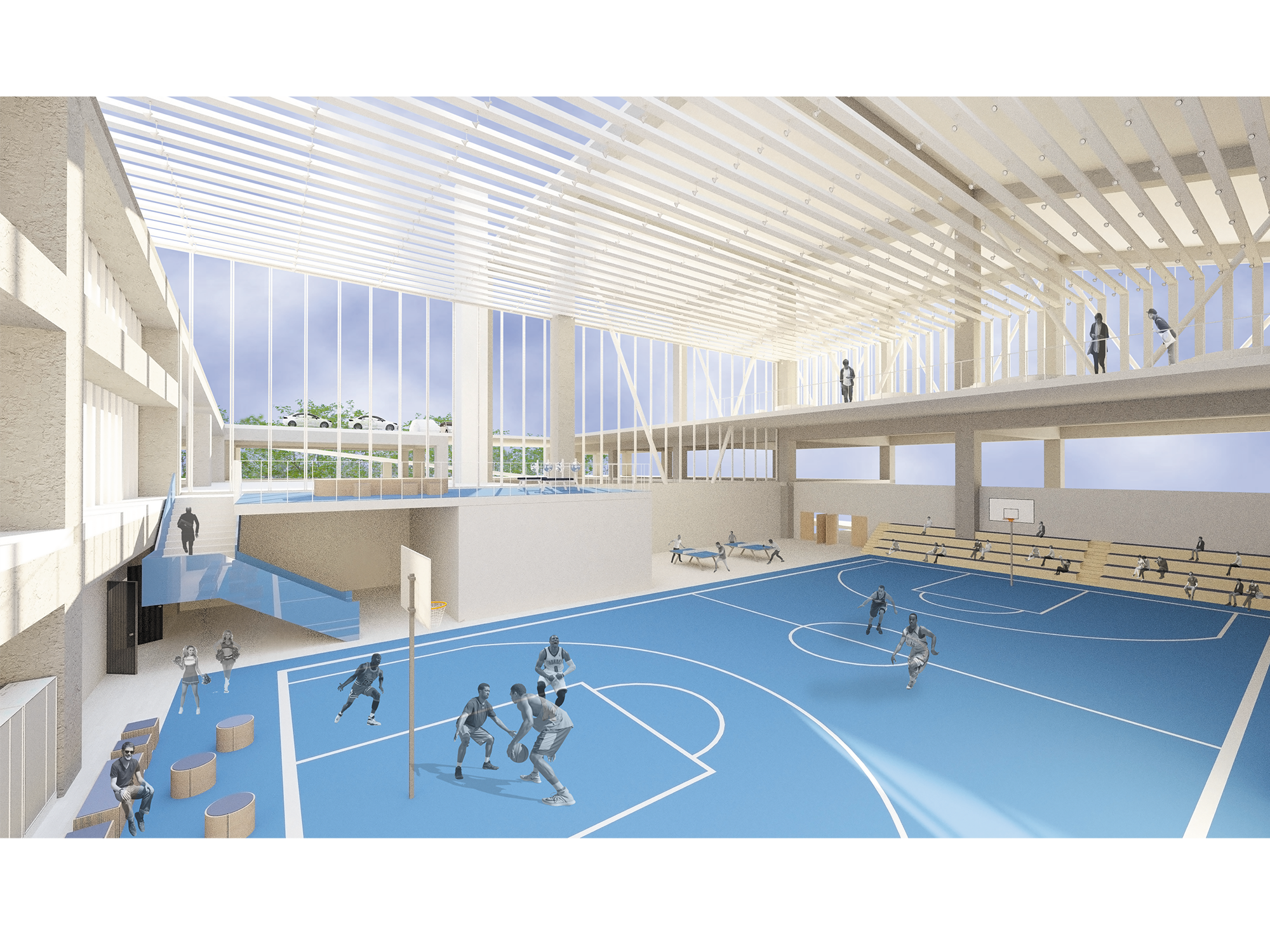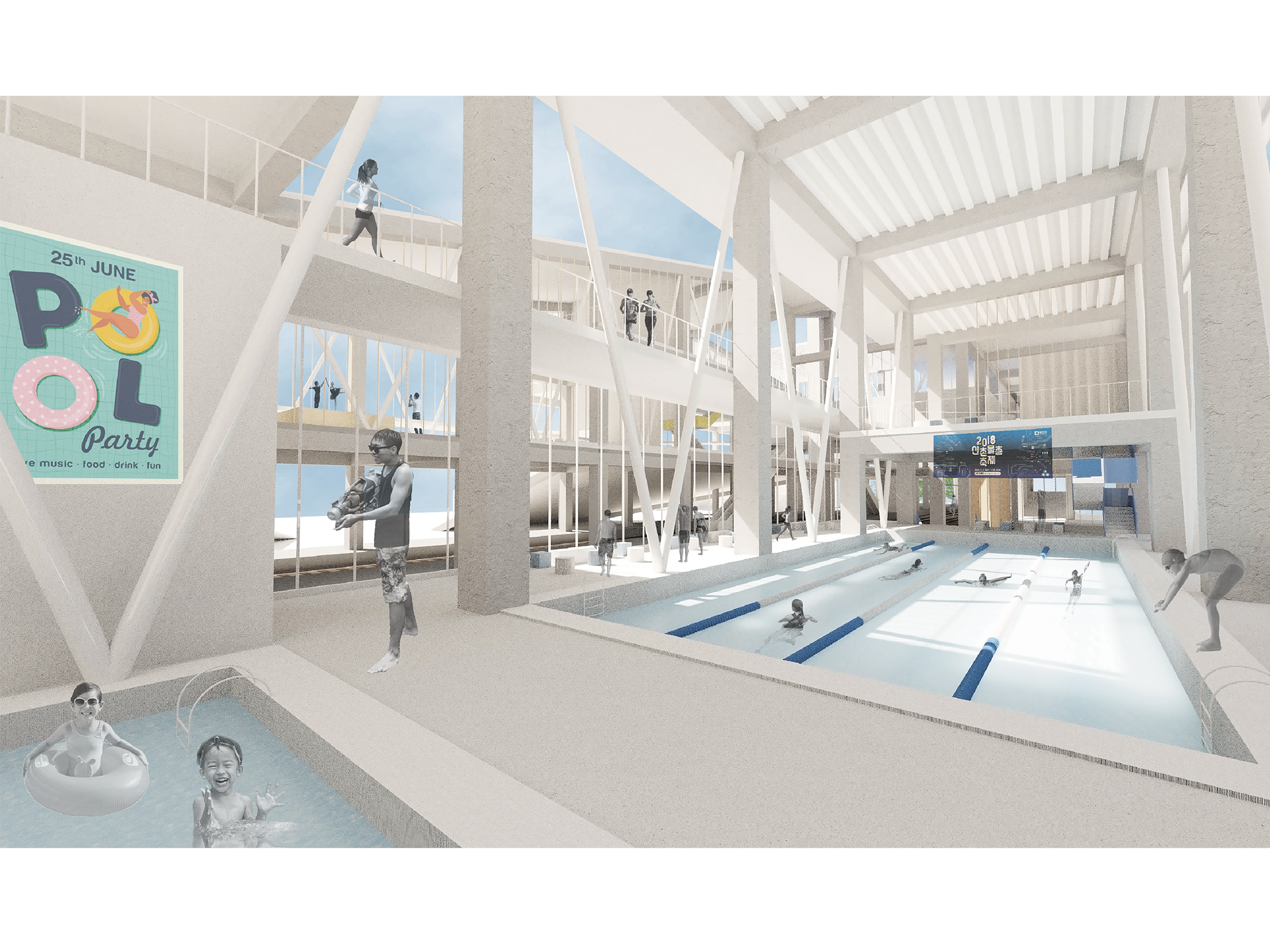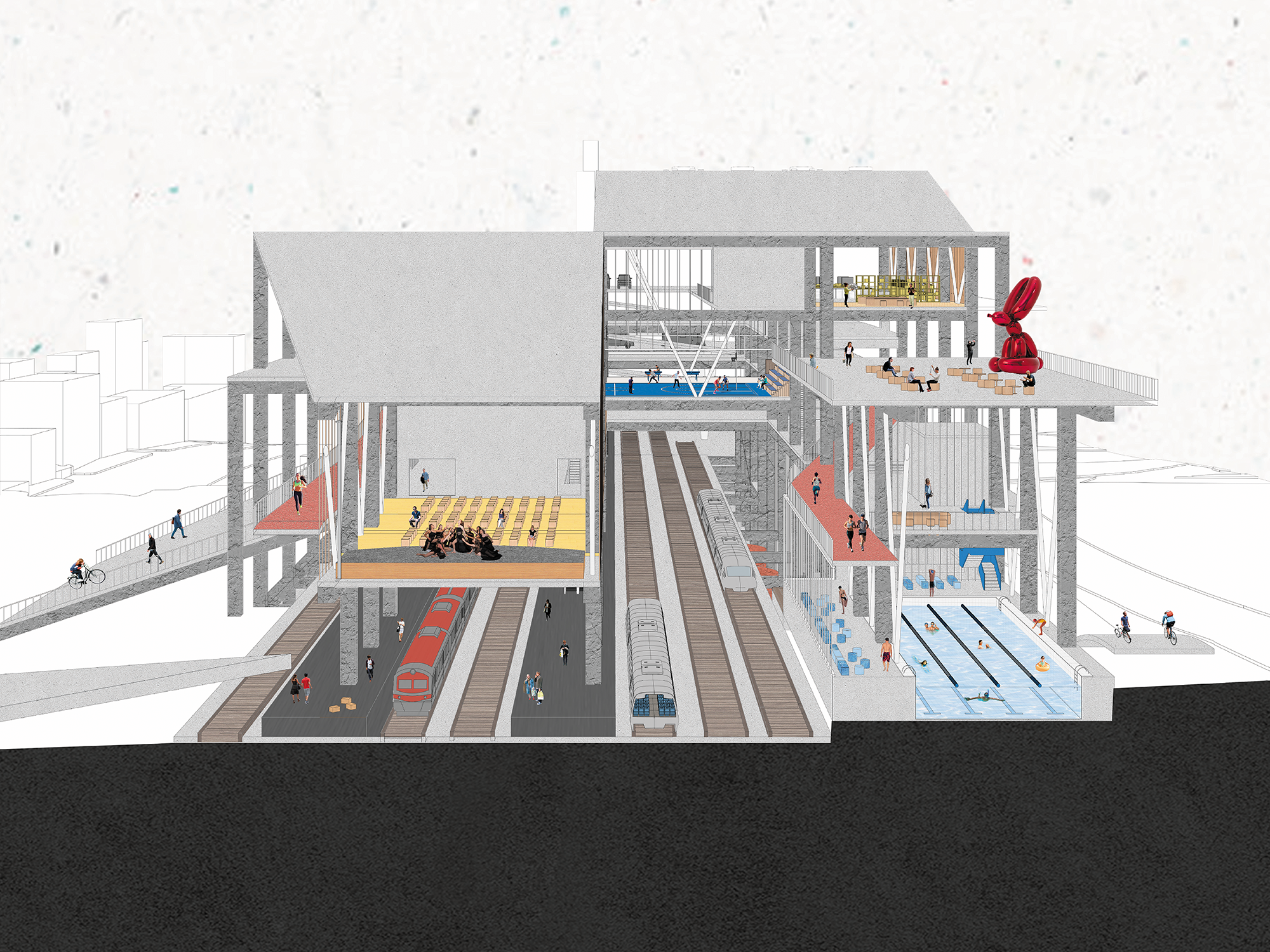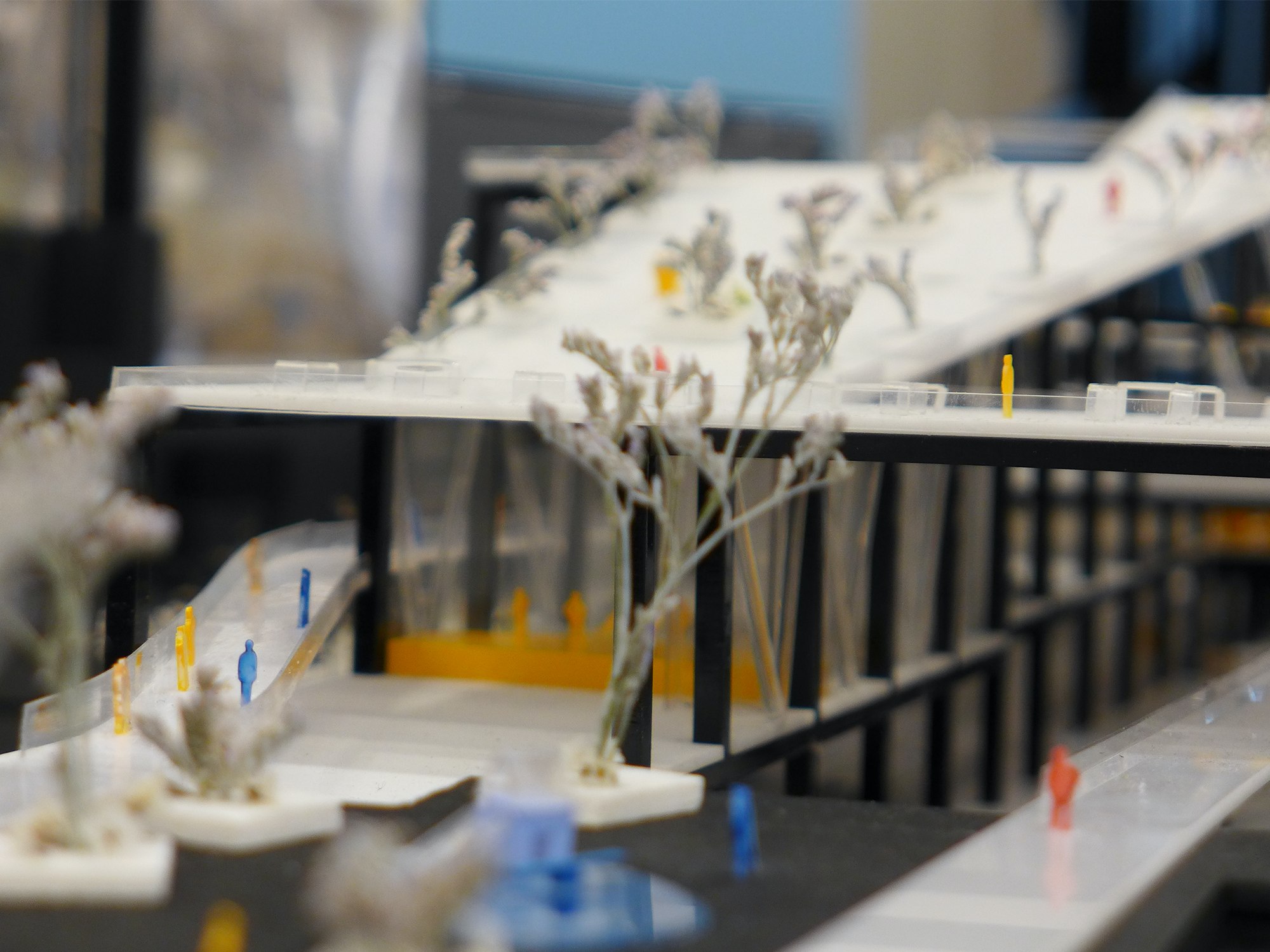공공의 역사 : 다층적 도시 인프라스트럭처
신촌기차역 민자역사를 중심으로
Public Station : Multi-layered Urban Infrastructure
Based on the Sinchon Commercial Train Station
현재 우리가 살아가는 사회에서 도시는 끊임없이 팽창하고 변화한다. 이러한 과정에서 도시를 이루는 공적인 영역과 자본주의에 의한 사적인 영역은 계속하여 충돌하며 부산물을 만들어낸다. 이러한 충돌 속에서 가장 공적인 영역이어야 할 곳에 자본으로 점철된 사적 공간이 들어올 때 문제는 발생한다. 이에 대표적인 예로 민자역사, 그중에서도 올해 100주년을 맞은 서울에서 가장 오래된 기차역사인 신촌기차역을 중심으로 프로젝트를 진행했다.
신촌 기차역이 위치한 신촌은 예전부터 교통과 문화의 중심지였다. 1921년 당시 신촌 기차역은 노출된 철도 위로 기차가 다니고, 사방이 트여있는 상태에서 사람들은 건널목을 건너다니며 시각적으로 기차를 인식하고 여행과 떠남에 대한 무의식적인 기대를 할 수 있었다. 그러나 2006년 1200억 원을 들인 민자역사가 들어온 이후, 신촌 기차역은 점점 쇠퇴하였고 현재는 영화관을 제외한 모든 공간이 공실 상태를 유지하고 있다.
이에 신촌 기차역을 다시 공공의 역사로 돌려놓고자 하였으며, 기존 신촌 기차역의 각 층을 대지로 보고 다층적인 인프라스트럭처를 구축하고자 했다.
교통과 프로그램을 바탕으로 신촌기차역이 기능하지 못하는 이유를 파악했고, 이를 해결하고자 기차, 자동차, 1인 모빌리티, 달리기, 걷기의 다섯 가지 속도를 중첩해 우연한 충돌과 경험을 조직했고, 이러한 속도이자 동선 사이로 문화, 체육의 프로그램들이 삽입되어 사람들에게 자연스럽게 시각적, 물리적으로 다가갈 수 있도록 했다.
In the society we live in now, cities are constantly expanding and changing. In this process, the public domain of the city and the private domain of capitalism continue to collide and create by-products. Problems arise when private spaces dotted with capital enter where they should be the most public areas in these conflicts. A representative example of this is private history, especially Sinchon Train Station, the oldest train station in Seoul, which marks its 100th anniversary this year.
Sinchon, where Sinchon Train Station is located, has long been a transportation and cultural center. In 1921, when trains were running on exposed railways, and people were able to visually recognize trains and make unconscious expectations of travel and departure by crossing crossings. However, since the introduction of Minja Station, which cost 120 billion won in 2006, the train station in Sinchon has gradually declined and all spaces except movie theaters remain vacant.
As a result, the Sinchon train station was to be returned to public history, and each floor of the existing Sinchon train station was to be viewed as a site and a multi-layered infrastructure was to be established.
Based on transportation and programs, we figured out why Sinchon Train Station was not functioning, and to solve this problem, we organized accidental clashes and experiences by overlapping five speeds: train, car, one-man mobility, running, and walking.
